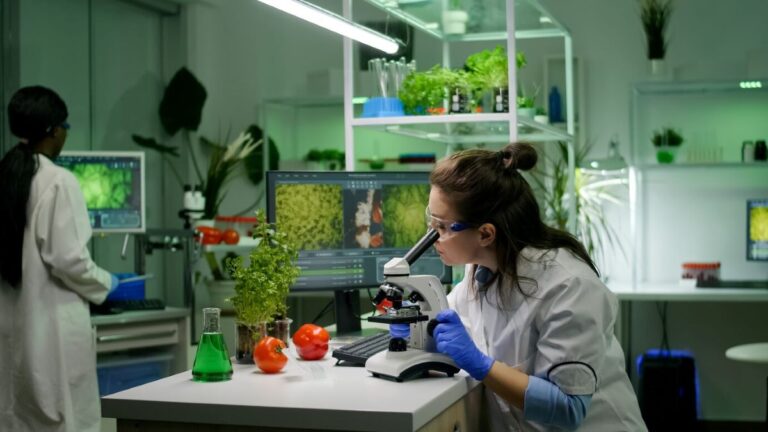In an age where food safety is paramount, the role of compliance management software has become increasingly vital for businesses in the food industry. With stringent regulations and the ever-present need for transparency, food safety compliance management software offers a streamlined approach to audits and reporting. This article delves into how such software can enhance operational efficiency, reduce risks, and ensure adherence to regulatory standards.
The Importance of Food Safety Compliance
Food safety compliance is not merely a regulatory obligation; it is a critical aspect of maintaining public health and trust. Non-compliance can lead to severe consequences, including foodborne illnesses, legal repercussions, and damage to a brand’s reputation. As such, the implementation of robust compliance management systems is essential.
Understanding Regulatory Requirements
Food businesses must navigate a complex landscape of regulations, which can vary significantly by region and type of food product. In Australia, for instance, the Food Standards Australia New Zealand (FSANZ) sets out comprehensive guidelines that businesses must follow. Compliance management software helps organisations keep track of these requirements, ensuring that they remain up to date with any changes in legislation.
Moreover, the software can automate reminders for compliance deadlines, making it easier for businesses to manage their obligations proactively rather than reactively. This proactive approach is crucial in avoiding potential fines and penalties associated with non-compliance. Additionally, staying informed about upcoming regulatory changes allows businesses to adapt their practices accordingly, fostering a culture of continuous improvement and vigilance within the organisation.
Enhancing Traceability
Traceability is a cornerstone of food safety. In the event of a food safety incident, being able to trace the source of contamination quickly can mitigate risks and protect consumers. Compliance management software facilitates this by providing comprehensive tracking of ingredients and products throughout the supply chain.
With features that allow for real-time data entry and monitoring, businesses can maintain accurate records of their products, from farm to fork. This level of traceability not only aids in compliance but also enhances consumer confidence in the brand. Furthermore, it enables businesses to conduct thorough investigations in the case of a recall, ensuring that affected products are swiftly removed from the market and that consumers are informed. The ability to swiftly identify and address issues not only safeguards public health but also demonstrates a commitment to quality and safety, which can significantly bolster a brand’s reputation in a competitive marketplace.
Streamlining Audits
Audits are a necessary part of ensuring compliance with food safety regulations. However, they can often be time-consuming and resource-intensive. Food safety compliance management software streamlines this process, making audits more efficient and less burdensome for businesses.
Preparation and Documentation
One of the most significant advantages of using compliance management software is the ease of documentation. The software typically includes templates and checklists that can be customised to meet specific audit requirements. This means that businesses can prepare for audits more effectively, ensuring that all necessary documentation is readily available.
Furthermore, the software can store historical audit data, allowing businesses to analyse trends and identify areas for improvement. This analytical capability not only aids in preparing for future audits but also fosters a culture of continuous improvement within the organisation. By tracking changes over time, companies can pinpoint which practices lead to better compliance outcomes, thereby facilitating a more proactive approach to food safety management.
Real-Time Monitoring and Reporting
Real-time monitoring is another critical feature of compliance management software. By providing live updates on compliance status, businesses can quickly identify any areas of concern and address them before they escalate into more significant issues. This proactive monitoring can significantly reduce the stress associated with audits.
Additionally, the software often includes reporting functionalities that allow for the generation of detailed reports with just a few clicks. These reports can be tailored to meet the specific requirements of different stakeholders, whether they are internal management or external regulatory bodies. The ability to generate comprehensive reports not only saves time but also enhances transparency, as stakeholders can easily access the information they need to make informed decisions. Moreover, the integration of visual data representation, such as graphs and charts, can further aid in communicating complex compliance metrics, making it easier for all parties involved to grasp the current state of food safety practices within the organisation.

Improving Reporting Capabilities
Accurate and timely reporting is essential in the food industry, where transparency is key to maintaining consumer trust. Food safety compliance management software enhances reporting capabilities, making it easier for businesses to communicate their compliance status effectively.
Customisable Reporting Tools
Many compliance management systems come equipped with customisable reporting tools that allow businesses to generate reports based on specific criteria. This flexibility enables organisations to focus on the metrics that matter most to them, whether it be compliance rates, audit outcomes, or incident reports.
Moreover, these reports can be generated in various formats, making it easier to share information with stakeholders. This capability is particularly beneficial during audits, where clear and concise reporting can facilitate smoother interactions with auditors. In addition, the ability to tailor reports to the needs of different audiences—be it internal teams, regulatory bodies, or consumers—ensures that the right information is communicated effectively, fostering a deeper understanding of compliance efforts across the board.
Data Visualisation
Data visualisation is an increasingly important aspect of reporting. Compliance management software often includes dashboards that present data in a visually appealing and easily digestible format. This allows for quick insights into compliance status and trends, making it easier for management to make informed decisions.
Visual reports can highlight areas of concern and track improvements over time, fostering a culture of accountability and continuous improvement within the organisation. Furthermore, the integration of interactive elements in these dashboards can empower users to drill down into specific data points, providing a more nuanced understanding of compliance issues. This level of engagement not only enhances the analytical capabilities of the team but also encourages proactive measures to address potential risks before they escalate into significant problems.
Reducing Risks and Enhancing Efficiency
Implementing food safety compliance management software not only streamlines audits and reporting but also significantly reduces risks associated with food safety non-compliance. By automating various processes, businesses can enhance overall operational efficiency.
Minimising Human Error
Human error is one of the leading causes of compliance failures in the food industry. Manual processes are often prone to mistakes, whether in data entry, documentation, or reporting. Compliance management software minimises these risks by automating many of these tasks, ensuring that data is accurate and up to date.
By reducing the reliance on manual processes, businesses can also free up valuable resources, allowing staff to focus on more strategic initiatives rather than administrative tasks. This shift not only improves efficiency but also enhances employee morale, as staff can engage in more meaningful work.
Integrating with Existing Systems
Another advantage of compliance management software is its ability to integrate with existing systems. Many businesses already use various software solutions for inventory management, quality control, and other operational needs. A good compliance management system can seamlessly integrate with these tools, creating a cohesive ecosystem that enhances overall efficiency.
This integration allows for the automatic transfer of data between systems, reducing the need for manual data entry and further minimising the risk of errors. As a result, businesses can maintain a comprehensive view of their operations while ensuring compliance with food safety regulations.

Conclusion
Food safety compliance management software plays a crucial role in streamlining audits and reporting within the food industry. By enhancing traceability, improving reporting capabilities, and reducing risks associated with human error, this software empowers businesses to maintain compliance with ever-evolving regulations.
As the food industry continues to face increasing scrutiny and demands for transparency, investing in compliance management software is not just a smart choice; it is a necessary step towards ensuring food safety and protecting public health. By embracing technology, businesses can not only meet regulatory requirements but also foster a culture of continuous improvement and accountability.
In a landscape where consumer trust is paramount, the benefits of food safety compliance management software are clear. It is not merely a tool for compliance; it is an essential partner in the quest for food safety excellence.
More to Read : The Essentials of HACCP Audits and Food Safety Inspection Readiness



